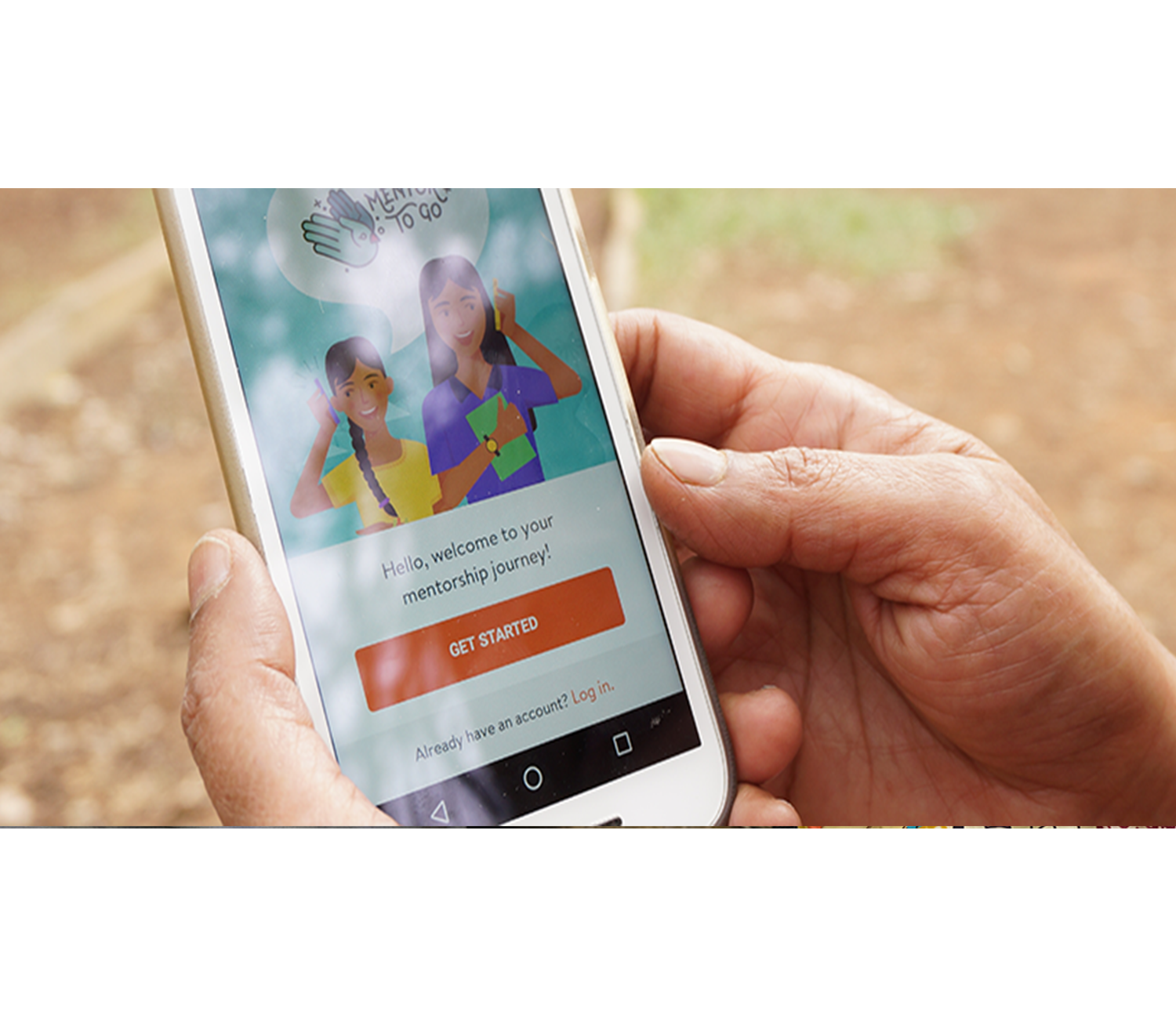Stay on the cutting edge of new ideas
INNOVATE
Programmes around the world are generating exciting new ideas and approaches for HIV prevention. New products, novel ways of designing and delivering programmes, digital tools and other innovations are changing the way we implement programmes for adolescents and young people.
 Development impact & you: Practical tools to trigger & support social innovation
Development impact & you: Practical tools to trigger & support social innovationThis toolkit lays out how to invent, adopt, or adapt ideas that can deliver better results. It features 30 practical social innovation tools that are quick to use and simple to apply. The original toolkit was designed for people working in development, but the tools are relevant for any project or group. Nesta's website offers an introductory video and translations of the toolkit into Arabic, Chinese, French, Russian, and Spanish.
NESTA
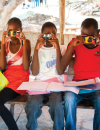
This guide describes the ways in which human-centered design can impact the social sector, and provides dozens of simple exercises that can be used by groups to clarify goals and design and implement programmes—keeping the values and needs of people at the centre of what they do.
IDEO, 2015
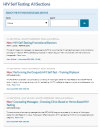 HIV self testing knowledge base
HIV self testing knowledge baseThis document reviews the findings of research into the acceptability of HIV self-testing among men who have sex with men in various countries.
USAID
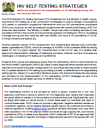 HIV self-testing strategies: Issues and priorities for the implementation of HIV self-testing among men who have sex with men
HIV self-testing strategies: Issues and priorities for the implementation of HIV self-testing among men who have sex with menReviews the findings of research into the acceptability of HIV self-testing among men who have sex with men in various countries.
Ministry of Health, Kenya, 2018
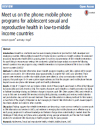 Meet us on the phone: Mobile phone programs for adolescent sexual and reproductive health in low-to-middle income countries
Meet us on the phone: Mobile phone programs for adolescent sexual and reproductive health in low-to-middle income countriesThis is a global landscape analysis on how programmes are using mHealth interventions to improve adolescent sexual and reproductive health in low- to middle-income countries.
Reproductive Health, 2017
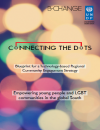 Connecting the dots: Blueprint for a technology-based regional community engagement strategy
Connecting the dots: Blueprint for a technology-based regional community engagement strategyConnecting the Dots is a blueprint for regional community engagement using Web 2.0 technologies. It is designed to support the wellbeing of young people from sexual and gender minorities by increasing shared knowledge, promoting and improving safe spaces, and strengthening community engagement. The guide presents principles for a multisectoral approach, and describes how to implement it.
B-Change Foundation, 2013
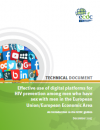 Effective use of digital platforms for HIV prevention among men who have sex with men in the European Union/European Economic Area
Effective use of digital platforms for HIV prevention among men who have sex with men in the European Union/European Economic AreaThis resource includes six guides (downloadable from the website) for using various digital platforms for STI and HIV prevention among men who have sex with men in Europe. The guides help users understand what digital platforms are available and how to use them for effectively; the costs associated with a successful advertising campaign; how to reach men who have sex with men and optimize content for maximum impact; and how to measure the success of outreach.
ECDPC, 2017
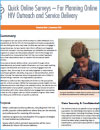 Quick online surveys: For planning online HIV outreach and service delivery
Quick online surveys: For planning online HIV outreach and service deliveryThis brief explains how online surveys can be used to a) understand the audiences that can be reached online for HIV services, b) optimize programmes to meet audience preferences, and c) assess which online outreach approaches will be more effective for HIV service delivery.
FHI 360 LINKAGES, 2018
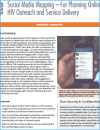 Social media mapping: For planning online HIV outreach and service delivery
Social media mapping: For planning online HIV outreach and service deliveryThis technical brief explains how social media mapping can help HIV programmes find and list the online places (e.g. Facebook groups and pages, social media influencers, and group chats) where members of young key populations can be reached. It describes the implementation steps, the outputs, and an overview of results from the use of this strategy in a number of countries.
FHI 360 LINKAGES, 2018
 Social network outreach: For HIV programs reaching at-risk populations online
Social network outreach: For HIV programs reaching at-risk populations onlineThis technical brief explains how social network outreach can be used to reach people online who are at risk for HIV and who have not previously been reached by HIV prevention and testing services. The approach offers the young person both anonymity, and person-centered contact, if they wish. The brief describes the implementation steps, outputs, and an overview of results from the use of this strategy in a number of countries by the LINKAGES programme.
FHI 360 LINKAGES, 2018
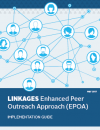 LINKAGES enhanced peer outreach approach: Implementation guide This guide describes the essential components of the enhanced peer outreach approach (EPOA) to reaching members of key populations who might not be accessible through conventional outreach. The guide describes implementation steps and potential challenges. It includes a checklist for preparing to implement EPOA, and examples of programme tools and forms. The curriculum provides a detailed training programme.
LINKAGES enhanced peer outreach approach: Implementation guide This guide describes the essential components of the enhanced peer outreach approach (EPOA) to reaching members of key populations who might not be accessible through conventional outreach. The guide describes implementation steps and potential challenges. It includes a checklist for preparing to implement EPOA, and examples of programme tools and forms. The curriculum provides a detailed training programme.LINKAGES enhanced peer outreach approach - Implementation guide
LINKAGES enhanced peer outreach approach - Training curriculum for peer outreach workers
FHI 360 LINKAGES, 2017
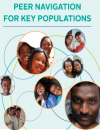 Peer navigation for key populations: Implementation guide
Peer navigation for key populations: Implementation guideThis is a guide and training curriculum for programmes implementing peer navigation (using HIV positive peers to engage and retain people living with HIV in the health care system). It is part of a core package of HIV-related interventions for key populations. The guide explains the role of the peer navigator, how to hire and manage navigators, and how to implement the programme. Sample tools and forms are provided.
Peer navigation for key populations - Implementation guide
Peer navigation training core modules - Facilitator's guide
FHI 360 LINKAGES, 2017
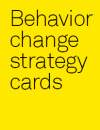 Behavior change strategy cards
Behavior change strategy cardsThis set of 23 cards are for designers, researchers, or anyone facing a behaviour-change challenge. They help individuals think through strategies to nudge people toward positive behavioural outcomes. The set is divided into five thematic sections, each featuring strategies and examples to show why the strategies are effective and prompt users to think about how they might be used.
Artefact
 HIVsmart! app
HIVsmart! appThis open-access mobile health application guides an individual through the process of performing an HIV self-test, with links to offline healthcare facilities and counsellors.
McGill University Health Centre Foundation
 PrEPme
PrEPmePrEPme is a free mobile app that connects patients in the U.S. state of Maryland to PrEP resources, including a location-based list of providers that prescribe PrEP. Resources include general information about PrEP, frequently asked questions, and research on PrEP in English and Spanish.
emocha mobile health
 Safebox
SafeboxThis Russian-language website offers information about HIV for men who have sex with men and providing access to HIV self-testing kits. It is supported by a digital campaign.
Phoenix Plus
 Hornet media kit
Hornet media kitThis media kit guides businesses and organisations on how to advertise on the Hornet gay dating app, including guidance on the variety of ad formats and estimated costs.
Hornet
 It starts with me
It starts with meThis web-based campaign raises HIV awareness and communicate messages about HIV testing and condoms to black African men and gay men and other men who have sex with men in the United Kingdom.
Terrence Higgins Trust, HIV Prevention England
 LoveYourself
LoveYourself A Philippines-based website with information on sexual health, safe sex, and HIV testing for young men who have sex with men. It offers a combination of online outreach, activities and campaigns, with an offline venue for testing and other HIV services, conducted by the NGO LoveYourself. The NGO has also created an app called safespace (available from the website) to help young people identify safe places where they can access free condoms.
LoveYourself
 Online to offline HIV testing model to reach young key populations
Online to offline HIV testing model to reach young key populationsGuidance and a description of a programme to help community-based organization provide youth-friendly HIV testing services for young members of key populations, with outreach online.
Online to offline HIV testing model to reach young key populations in China
Online to offline HIV testing model - Slide presentation
Online to offline HIV testing - CHINESE.pdf
Chinese Association of STD/AIDS Prevention and Control
 Test XXX
Test XXXExample of a comprehensive digital campaign to get young men who have sex with men to test for HIV, using tailored, provocative messaging. Starting from a pilot campaign, TestXXX has been adapted and rolled out in half a dozen cities in South-East Asia. These country-specific websites are accessible from the TestXXX website.
APCOM
 AdamsLove
AdamsLoveA website offering HIV information to men who have sex with men and encouraging them to adopt safer sex practices and more frequent HIV testing. It provides online counselling and advice on HIV, AIDS and related subjects via videos, podcasts and forums, games and quizzes. There are linked websites with material specific to Indonesia, Malaysia, Taiwan and Thailand.
AdamsLove
 Anova's Young Heroes programme
Anova's Young Heroes programmeThis report outlines a formative demonstration project of a group intervention addressing the psychosocial needs of young men who have sex with men in South Africa. Outreach campaigns took place through multiple media and in schools. The report discusses the different components of the campaign and key lessons learned. The Young Heroes website offers videos and information materials that have been tested with focus groups of young men who have sex with men.
Anova Health Institute, South Africa, 2016-2018
 No Hoodie, No Honey social media campaign
No Hoodie, No Honey social media campaignThis case study of a social media campaign run by UNFPA in Nigeria used online videos to educate adolescents and young people, particularly girls, on the importance of practising safe sex.
C4D, 2013
